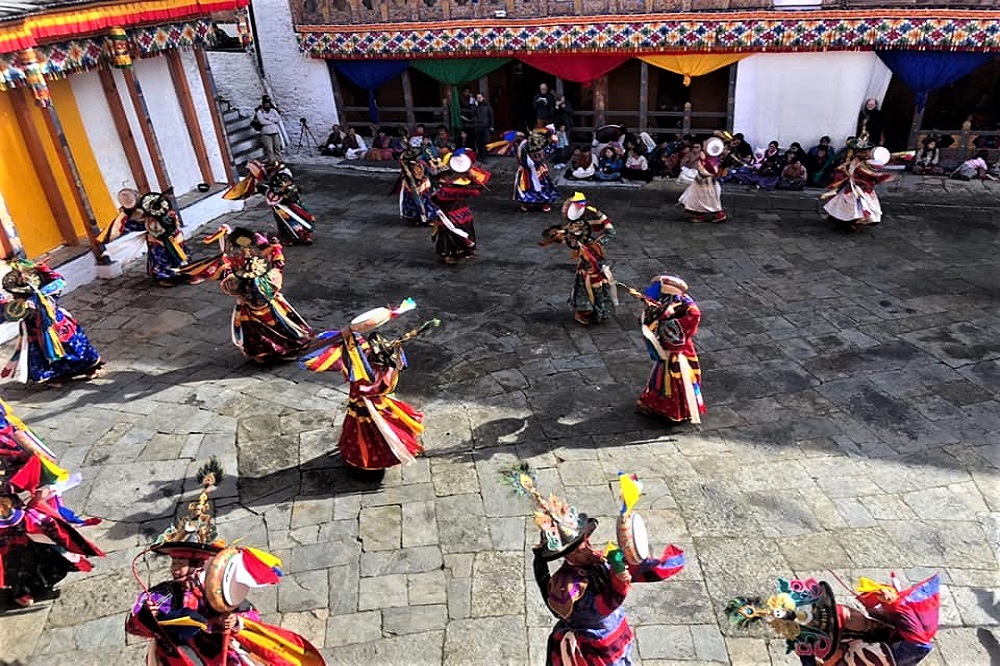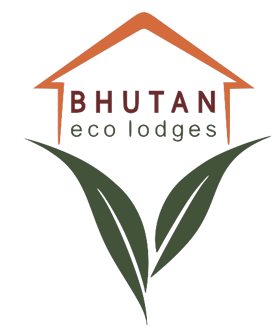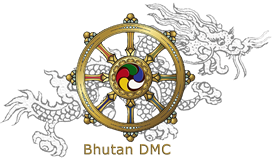Trongsa Tshechu - The highly meritorious festival to honour Buddhist Guru Rinpoche held at the kingdom’s largest fortress

Trongsa, the sacred and temporal heart of the country is located in central Bhutan and notably 87% of the district is still under forest cover. The Mangdue Chhu River flows through the heart of the district dividing Trongsa almost into two halves. Historically, Trongsa has been one of the most important district in Bhutan and served once the seat of power over central and eastern Bhutan. Both the first and second Kings of Bhutan ruled the country from this ancient seat, and it is customary for the Crown Price to serve as the Trongsa Penlop (Governor) prior to ascending the throne.
The Tshechu (festival) of Bhutan specifically honours Guru Rinpoche (Guru Padmasambhava) and celebrates his deeds through the performance of sacred mask dances. Since Guru Rinpoche honoured as a fully enlightened being, he is highly revered in Bhutan, and it is through his teachings that Bhutanese devotees are guided towards path of enlightenment. The dances performed during festival assist in cultivating Buddhist faith and understanding of Guru’s deed and as such honour and educate the devotees.
Before leaving the earthly realm, Guru Rinpoche promised that he would return on the 10th day of each month in the Bhutanese lunar calendar. For this reason, the word Tshechu which means tenth, is considered a very auspicious day. Every monastery in Bhutan observe the annual Tshechu (festival), which celebrates the arrival of Guru Rinpoche to Bhutan in the 8th century, a mark of triumph of Buddhism over darkness.
Annual Trongsa Tshechu is celebrated at Trongsa Dzong during the month of December or January corresponding between 8th and 12th day of eleven lunar calendar month. The massive Trongsa Dzong is the largest fortress in Bhutan which stands on a spur overlooking the gorge of the Mangdue Chuu river. The Dzong is the massive structure with many levels, which slope down the contours of a hill on which it perches. It is believed that Tshechus in other parts of Bhutan was spread from Trongsa district.
During the festival, various religious mask dances are performed notably, Black-Hat Dance with Drums, Dance of Drametse Monastery with Drums, Malevolent Spirit Dance, Dance of Noble Men and Charming Ladies, Hound and Stag Dance, Monk Dances, Farewell/accompaniment Dance, Dance of the Lords of the Cremation Ground, Wrathful Dance, Dance of the Eight Manifestations of Guru Rinpoche, Dance of the Sixteen Dakinis.
Trongsa Tshechu concludes with unfurling of Thongdroel (large tapestry), for public veneration and to receive blessing. Thogdorel literally means ‘liberation and blessings at the sight’ and it is believed that just by viewing Thongdroel, people can be liberated of all sins. The festival also brings together people from all walks of life to witness religious and cultural performances, attain merit while at the same time its an important occasion for socialising and enjoy life with festival spirit and fervour.
(Image credit: Trongsa Dzongkhag Administration)
HOTELS IN THIMPHU
HOTELS IN PUNAKHA & WANGDUE
HOTELS IN GANGTEY
HOTELS IN TRONGSA
HOTELS IN BUMTHANG
HOTELS IN MONGAR
HOTELS IN TRASHIGANG
HOTELS IN SAMDRUP JONGKHAR
HOTELS IN PHUENTSHOLING
HOTELS IN HAA
HOTELS IN GELEPHU
HOTELS IN ZHEMGANG
RESTAURANTS IN PARO
RESTAURANTS IN THIMPHU
RESTAURANTS IN PUNAKHA
TOUR ITINERARIES
TREKKING ITINERARIES
SPECIAL INTERESTS TOURS
UNIQUE FESTIVALS & FAIRS
BLOG


